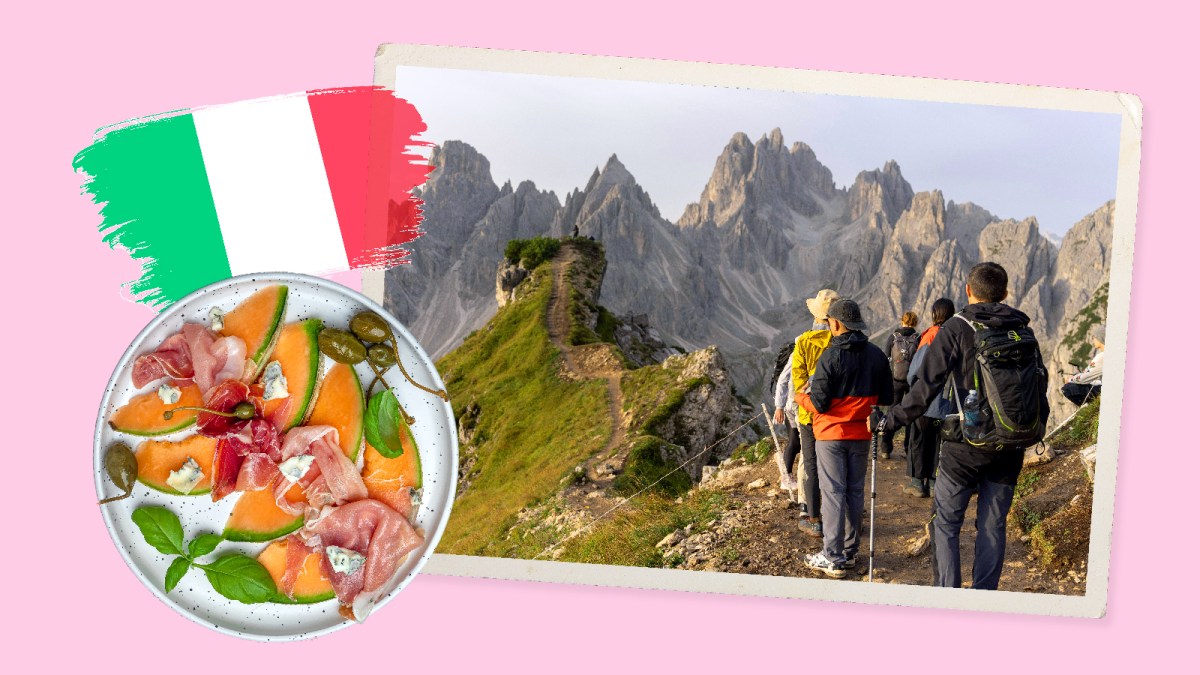Mountain refuges in the Italian Alps are often spartan affairs where weary and grateful hikers eat a plate of hot food, sleep in shared rooms, get an early night and push off at dawn.
But things are changing fast as hordes of first-timers head for the heights, horrifying refuge owners by hiking in flip flops, wearing no jacket to ward off sudden squalls and treating the refuges as party venues.
“Thanks to cable cars and new car parks they can walk for half an hour then think the refuge is a hotel and want luxury,” said Antonio Montani, president of the Italian Alpine Club.
New cable cars have made mountaintops more accessible, leading to huge queues of tourists in places such as Col Rodella
ALAMY
One refuge manager said he had seen it all when a visitor demanded a plate of prosciutto and melon, a beach-style lunch light years from the hearty polenta more frequently eaten in the mountains.
Mountain officials are stumped this summer as to how to halt the Alpine invasion, which has led to huge queues for the cable car at Seceda in the Dolomites, where furious farmers near the mountain’s peak have put in turnstiles and charged €5 entry as tourists trample their meadows.
A trend that started during Covid as tourists sought solitude in the mountains has been exacerbated by soaring heat in cities and on beaches, Montani said.
“We don’t have exact numbers but we do know that the 8,000 rescue operations carried out a year before Covid has now risen to 12,000,” he said.
Montani said the busiest sites, like Seceda, the Three Peaks of Lavaredo and Lake Braies, all in the Dolomites, were all easily accessible by car or cable car.
Lake Braies has become increasingly popular
LUCA CARLINO/NURPHOTO/GETTY IMAGES
“Getting a cable car to 3,500 metres and then ordering champagne and oysters is not getting into the spirit of the mountain,” he said.
Montani said the only solution was making people walk more. “The need to hike to get somewhere is a filter, a form of natural selection we need back. The mountain should be synonymous with fatigue,” he said.
He said that inexperienced hikers who do bite off more than they can chew are increasingly trying to call in helicopter rescues, merely because they are worn out. “They don’t realise that rescuers act out of a sense of solidarity and are often volunteers,” he said.
Another solution, he said, was to wean people off the obsession with taking the same photo of peaks as their favourite influencers.
The queue for the shuttle bus to Tre Cime di Lavaredo, a dramatic mountain range in the Dolomites that faces immense pressure on services
SIMONE PADOVANI/GETTY IMAGES
“Often they have no idea of what they are photographing — it could be the Pyramids and they wouldn’t notice,” he said.
Packed mountains this summer have been the flip side to the coastal picture, where the number of tourists renting a deckchair and umbrella at Italy’s thousands of beach clubs has dropped by up to 30 per cent.
A heated discussion in the Italian press over whether the clubs’ price hikes have scared off holidaymakers was fuelled by Mario Tozzi, a television presenter, who claimed that Italy’s sand should be free to sit on in the first place and not monopolised by the clubs.
“Nowhere else in the world is like Italy,” he complained.
A beach club in Sorrento. A very hot summer has impacted tourist numbers at Italy’s beaches
ALAMY
The growing rebellion has drawn a furious response from the national association of beach club owners, which said it was fighting against a sinister plot to steal their concessions and hand them over to foreign firms.
Thousands of Italians have managed to avoid both high-priced sunbeds on the beach and long queues for mountain cable cars by attending the thousands of small town festivals that proliferate in Italy in mid-August. They often revolve around local food specialities, like the festival of Sopressa salami near Vicenza, west of Venice, the festival of fried rabbit near San Miniato in Tuscany and the 11-day bash in Ascoli Piceno honouring olives stuffed with meat and fried in breadcrumbs.
Montani said there was one solution for holidaymakers seeking both great food and empty mountains.
“I shouldn’t really announce this but there are amazing mountains to climb in southern Italy, like Aspromonte in Calabria and Pollino national park between Calabria and Basilicata. They are not as high as the Alps but they are wild and natural and the cooking is fantastic.
“Just don’t ask for champagne and oysters,” he said.




